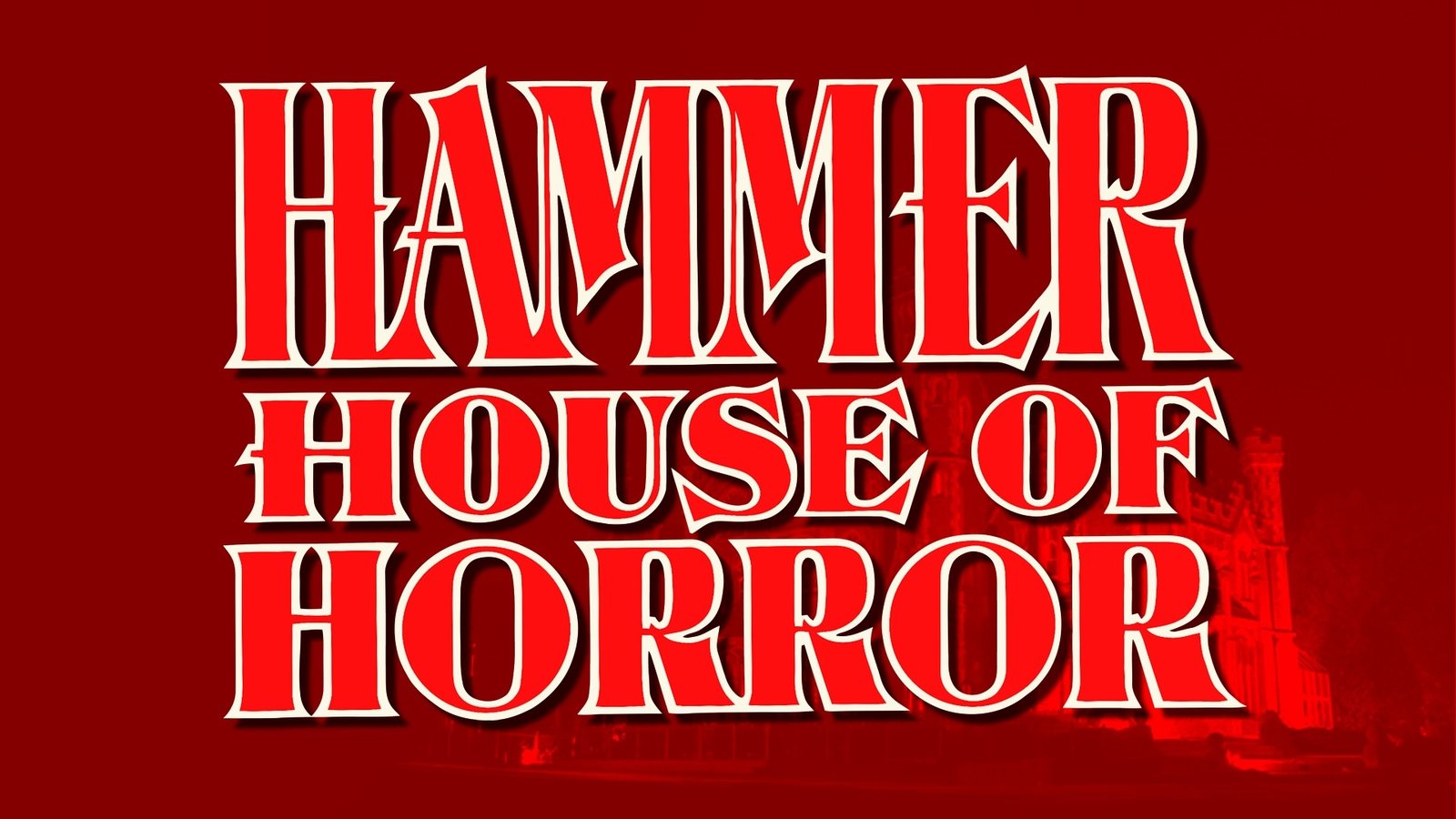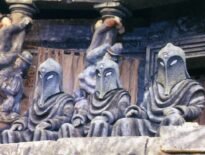I’m a huge horror fan. One of my earliest memories is of watching the final act of 1980’s The Fog, through a crack in the living room door when I was far too young. Seeing those ghostly pirates creeping down the aisle of a church and Adrienne Barbeau fleeing to the very roof of a lighthouse to escape the same ghosts has been imprinted in my memory — something I’ll always remember.
And as great as a lot of the American horror movies are — indeed, The Fog is my favourite horror movie of all time — there is one production company who often get, unfairly, overlooked. That production company was Hammer and their films would become the stuff of legend.
While there is a much larger article to be written, possibly about the influence Hammer had on how horror movies were produced, this is a look at some of the more underrated movies they made. There might be some titles on this list that will surprise you, some that you might have never heard of, but with Halloween upon us, here are 10 underrated Hammer films that you should definitely watch!
10. Straight On Till Morning – 1972

As the horror genre moved into the 1970s, Hammer found that the old favourites of vampires, Frankenstein, and mummies weren’t doing it for audiences. So they commissioned some more psychological thrillers and Straight on Till Morning is one of their better ones.
The story sees a young woman called Brenda, finding out she’s pregnant but with an absent father, she needs to find a young man who she can convince is the dad of the unborn child. There is a lot of social commentary on the shocking attitudes towards single mothers in this film and while that forms the backbone for why Brenda does what she does, it also gives her a reason why she can’t away. Moving to London, she falls for the handsome and rich Peter and ignores everyone’s warnings about him. When her friend and his dog is brutally murdered by Peter, Brenda has to face the man who killed them but can she and her unborn child survive his murderous rage?
Out of all of Hammer’s output, Straight on Till Morning is, for me, one of the strangest of all. For that reason, it isn’t any higher on the list, but it’s well worth a watch. There are some genuinely unsettling performances from the two leads, Rita Tushingham and Shane Briant as Brenda and Peter respectively, and director, Peter Collingson manages to inject the film with a creeping sense of unease as the life Brenda makes for herself slowly begins to unravel. There are some tense moments here, but I think, while certainly underrated, the entire film is a little too uneven to be considered a true classic.
9. Scars of Dracula – 1970
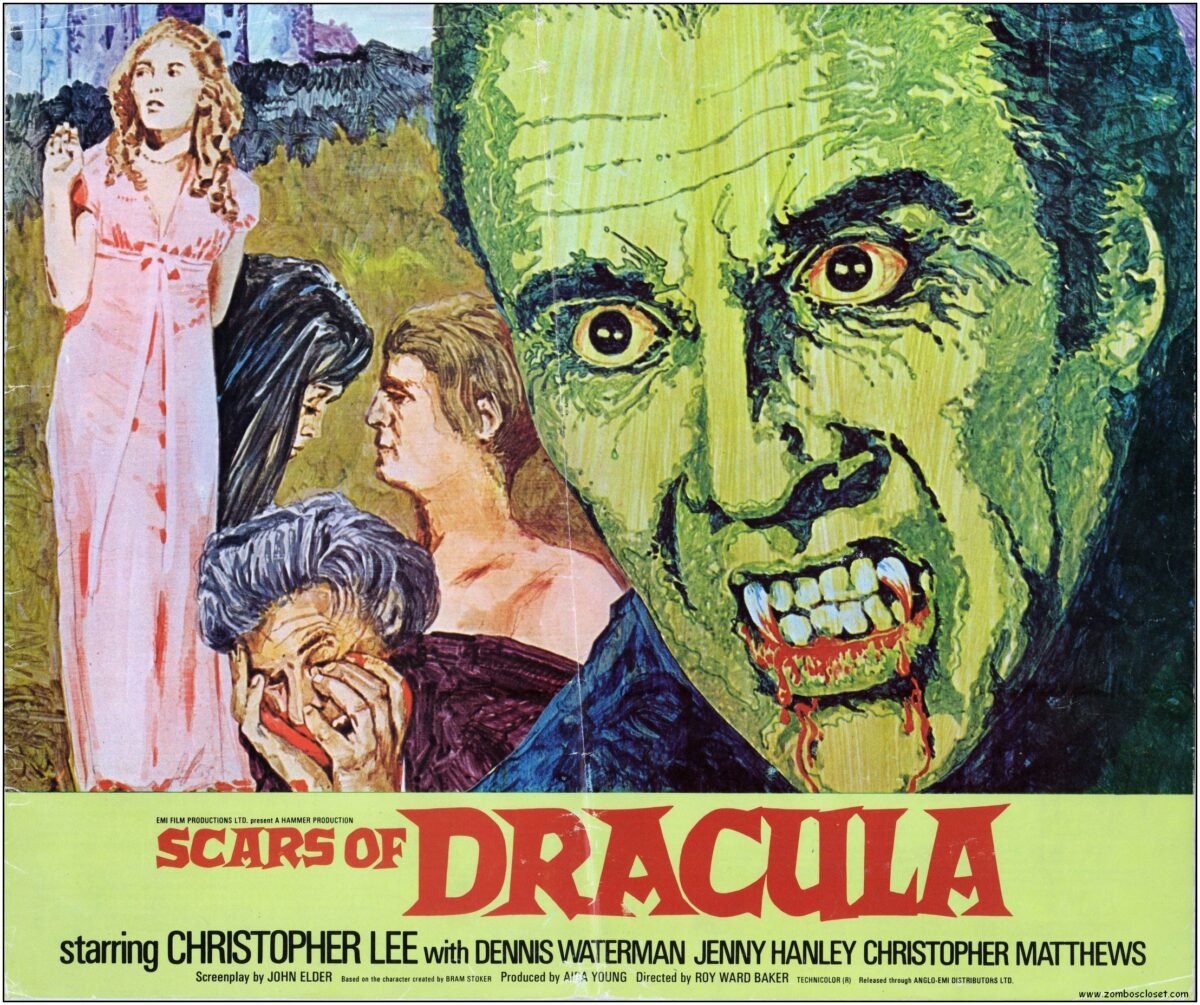
The fifth of Christopher Lee’s appearances as Dracula, Scars of Dracula sees a young Dennis Waterman come up against the vampiric count and his evil manservant, Klove, played by the Second Doctor himself, Patrick Troughton.
I’ll be honest, this isn’t the best of the Dracula films, but it is the first of the Dracula films, since the original 1958 film, to give Lee plenty to do. When Dracula is resurrected once again, this time by a bat dripping blood on him, he begins to get his revenge on the town which had previously defeated him. That previous defeat doesn’t get explained, especially as the previous Dracula film saw the Count getting beaten in a church in England — but that was to be the first of many continuity issues this movie made.
When Dennis Waterman’s character Simon and his fiance, Sarah, played by Jenny Hanley, try to find Simon’s brother Paul, they end up at the gates of Dracula’s castle. This is another film where the performances really elevate what might otherwise be a weak entry to the Dracula series.
Christopher Lee is always brilliant as the Count, even if he didn’t like the movie itself, and Patrick Troughton is genuinely terrifying as Klove, easily throwing off the cloak of Doctor Who, in much the same way Wendy Padbury did with Blood on Satan’s Claw. Dennis Waterman is good here, even if the script doesn’t give him much to do. For me, the weakest part is the ending. But Scars of Dracula is still an underrated and thoroughly enjoyable entry in Hammer’s long association with the evil Count, even if the best of his character had come and now was long gone.
8. Fear In The Night – 1972
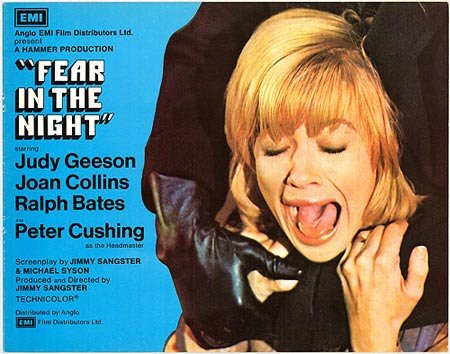
Fear in the Night saw long standing Hammer screen writer, Jimmy Sangster return to the writing, directing, and producing chair, creating a film that manages to successfully blend old and new, and bridge the gap between the shock factor of the 1950/1960s films with the psychedelic seductiveness of the 1970s thrillers.
The opening scene sees a man having been hung with a children’s choir singing in the background, paying homage to many of the early Frankenstein films which always seemed to open with someone getting executed.
When Peggy and her husband Robert move into a cottage on the grounds of a private school, he begins his job as caretaker and this leaves Peggy alone for long periods of time. What follows sees Peggy slowly losing her mind, thanks to her husband and a woman called Molly, played by Joan Collins. At the school, Peggy also meets the headmaster, Michael, played by Peter Cushing, who has an impressive false wooden hand.
Fear in the Night is a tight thriller, much more successful than Straight on Till Morning, and all its elements feel a lot more cohesive. Sangster manages to give the movie a mechanical feel like someone else is in control all the time, but it works wonderfully, especially with the final twist. It’s just sad that Peter Cushing is shockingly underused here.
7. Rasputin: The Mad Monk – 1966
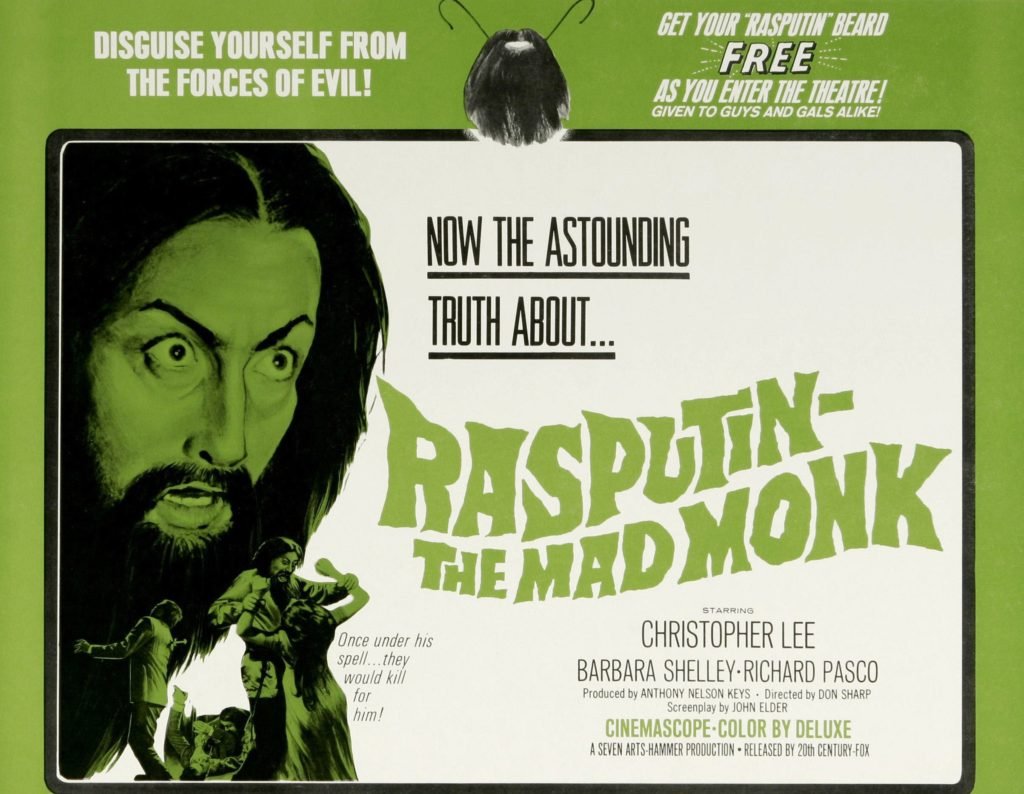
Based off the real Grigori Rasputin, The Mad Monk was made back-to-back with Dracula: Prince of Darkness as a cost cutting measure. As a result, it shares production teams, sets, and cast, led by the horror powerhouses that are Christopher Lee and Barbara Shelley.
Rasputin: The Mad Monk feels a lot like the early 1970s thrillers from Hammer and could be seen as a model for them to follow; apart from his unnerving ability to hypnotise people, this movie features no supernatural threat. The Mad Monk was also released when Hammer was at their peak, putting out plenty of movies and making plenty of money as a result.
The performances shine. Christopher Lee is perhaps at his most unnerving here. Rasputin was never a looker in the real life, but something about the way Lee plays him makes him strangely seductive.
Some of the events had to be fictionalised, given how, at the movie’s release, some of those involved in the real assassination were still alive, but that doesn’t stop this from being one of Hammer’s best. It’s a shame it’s not spoken about more, as outside of Dracula, this is one of Lee’s best performances.
6. The Nanny – 1965
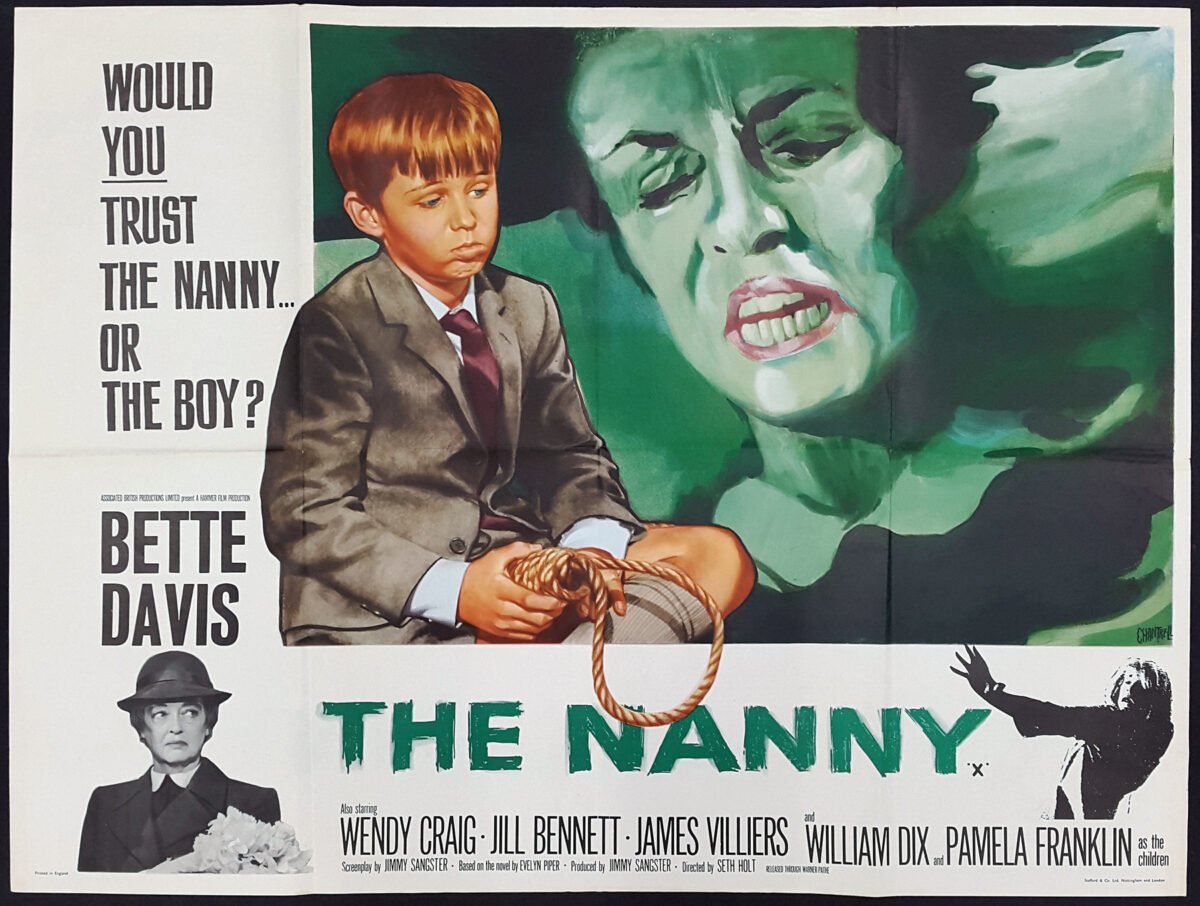
One of the earliest Hammer films, The Nanny, like many of these movies, runs more like a thriller than a full on horror movie. There are no ghosts here; no vampires, no creatures. Instead, it asks the question: what happens when Nannies go bad?
Upon watching this a few years back, I came away feeling that this could be a sequel to Psycho, which had been released five years earlier. Much like Norman Bates, the audience, besides the title, have no reason to suspect Bette Davies’ strict but loveable Nanny. And much like Norman Bates, that makes her eventual turn and the final twist even more shocking.
What The Nanny does best is subvert the audience’s expectations: throughout the first two acts of the film, you suspect Joey, a 10 year old boy, for the death of his sister. But suffice to say, all is not as it seems.
One of Hammer’s best non-monster movies, The Nanny gives Bette Davis a chance to deliver one of her best performances. She is incredible here. And much like Blondie’s song, Bette Davis Eyes, this film will tease you, it’ll unease you, one look in her eyes…
5. Vampire Circus – 1972

One of the more stylish and mature vampire outings, Vampire Circus sees a small town fall prey to a travelling group of humans and vampires; the latter make their through to resurrect an old ally of theirs who had been killed a few years ago.
Vampire Circus has a dream-like quality and boasts some of the best performances from any Hammer film, with Adrienne Corri as the Ringleader, and Lalla Ward as one of a pair of vampire twins, to Lawrence Payne as the professor who works out what is going on and puts a stop to it. Everyone here puts in a tremendous performance. And all three of those actors would be reunited in 1980 with the Doctor Who story, The Leisure Hive.
Vampire Circus had one of the more tumultuous productions, with the director getting into trouble because he ran out of time due to all the sequences he wanted to include. The film had to be shut down and the editor told to make a movie out of what footage had been filmed. It also has a number of sequences which were edited out of many international screenings, including a circus act with a naked woman, in make-up to look like a tiger, doing a gymnastics performance.
But somehow Vampire Circus works. I’d love to see it how the director originally intended, but thankfully, the finished article is enough. Though it does feel a little flat (it doesn’t have the charisma of an actor like Christopher Lee), that same seductiveness comes through in the performances from the other vampires and it makes a change to see humans and vampires working together, rather than trying to kill each other.
It’s a shame this was one of the last vampire movies Hammer made, because it seemed like Hammer finally found the right ingredients to make these types of movies thrilling again.
4. Frankenstein Created Woman – 1967

By 1967, the Frankenstein series was running a little stale and Hammer was feeling it. Gone was the shocking and glorious body horror of the original movie; they knew they needed to do something completely new.
With Peter Cushing still in the lead role as Baron Frankenstein, he takes the recently executed body of his servant and traps his ‘soul’. When his servant’s lover takes her life, Frankenstein puts the soul of his servant Hans into the restored body of the woman. What follows is Hans using the body of his former lover to exact his revenge on those who wronged him.
There is still something quite shocking about seeing a Victorian lady going around murdering people and director, Terence Fisher does a great job of delivering the horror of that thought. But where Frankenstein Created Woman shines is in its look at the metaphysical aspects of life, such as identity, and questions what a soul really is and how it relates to the body.
And after four films of Cushing selling Frankenstein as more of a monster than any of his creations, here he finally gets some development. In his last appearance for a few years as the Baron, we see Frankenstein finally facing the consequences of his actions and the corruption of an innocent woman which all builds to the final scene where we are forced to ask, has he finally developed a conscious?
3. The Satanic Rites of Dracula – 1973
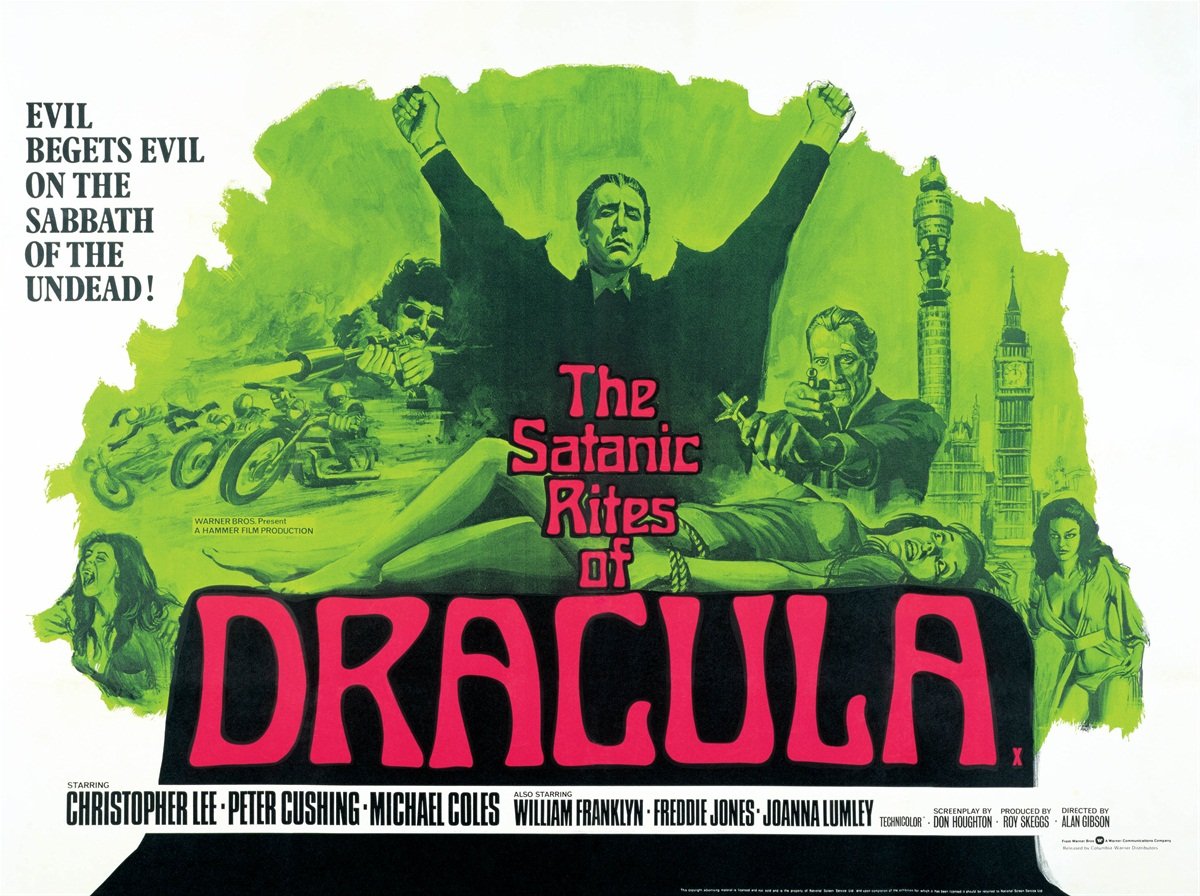
The final outing for Christopher Lee in the titular role, The Satanic Rites of Dracula feels a lot different from previous Dracula entries. With Hammer having brought the Count into the modern day in the previous movie, the terrible Dracula: AD 1972, we finally get a final confrontation between Lee’s Dracula and Peter Cushing’s Van Helsing.
It feels like every Dracula movie ends with a battle between these two characters, but this was actually the last of the three meetings the pair shared onscreen. Looking at what was on television, police procedurals and spy thrillers were on every channel and this has a definite feel to that. With a secret agency investigating rumours of Dracula’s return and the involvement of several high ranking political figures, they have no choice but to turn to Van Helsing and his granddaughter Jessica.
For actress, Joanna Lumley who played Jessica, there are definite shades of Purdy, the role she would play in The New Avengers. Although a little subdued, some might say thankless, she easily stands up against Peter Cushing and Christopher Lee and as such the final confrontation, in a gothic English mansion, feels entirely earned.
Much like Frankenstein Created Woman, Dracula seems to have developed something of a conscience, deciding it’s time for him to finally die but determined to take as many with him as he can, thanks to having unleashed the Bubonic Plague once again. But it’s still an interesting way to take the character in his final outing from Hammer.
2. The Plague of the Zombies – 1968
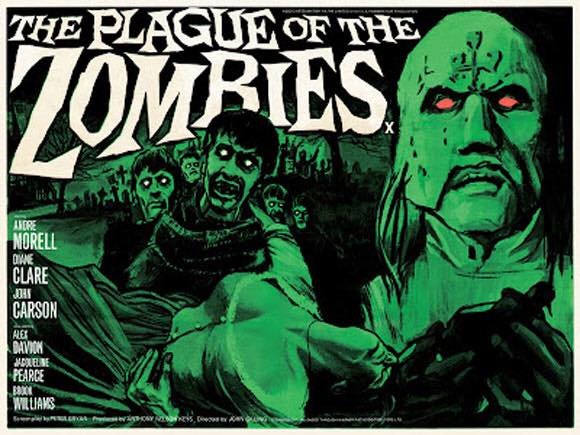
Another film shot back to back in a cost cutting method with The Reptile, both share sets, cast, and production crews, but it is The Plague of the Zombies which is the much more interesting outing. Taking place on the Cornish coast, rather than a fictional town in Europe, it’s one of the earlier Hammer outings to actually be set in the UK.
It’s also one of the movies on this list that probably has people shouting that lots of fans talk about. But I feel, looking at the Frankenstein and Dracula and other creature-features coming out around the time, it’s often overlooked. That’s a shame as its imagery has often be referred to and paid homage to in later zombie movies.
What I particularly like here is that they aren’t zombies as we imagine them nowadays; instead they hark back to their Haitian origins, being used as servants for an evil master. While they are probably less dangerous than the mindless hordes we are used to now thanks to movies like Night of the Living Dead, which came out two years after this, they almost feel like a different breed of zombie altogether and even now, after 50 years, this aspect allows the creatures to still feel completely fresh and new.
There are some terrific sequences to enjoy too. One, a nightmare, sees the hero, Peter, in a graveyard with zombies surrounding on on all sides, while a reanimated Jacqueline Pearce climbs out of a fresh grave, and that thought is frightening in itself! Even this scene would be echoed with “They’re Coming To Get You, Barbara” in Night of the Living Dead.
The Plague of the Zombies deserves to be remembered for its striking imagery, brilliant performances, some genuinely frightening moments, and its influence on the hundreds of zombie movies that came afterwards, while also remaining able to stand apart from them.
1. Blood From The Mummy’s Tomb – 1971
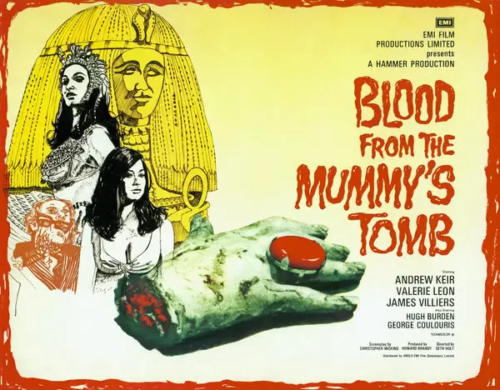
Apart from the original 1950s Hammer appearance, the idea of The Mummy was never as popular as Frankenstein or Dracula, despite being one of those monsters that had terrified people in their original 1930s Universal Studio’s outings.
That’s why it’s such a surprise that Blood From The Mummy’s Tomb, despite its backstage problems, is such a fun and glamourous tale, loosely based off of a short story by Bram Stoker.
When the tomb of an evil Egyptian Queen, Tera, is unearthed, the Sarcophagus is brought back to London by Julian Fuchs, an archaeologist.
When his daughter Margaret, who bares a striking appearence to Tera, begins to have bad nightmares and she soon finds herself in the crosshairs of her father and the evil Corbeck, who wants to resurrect Tera in the body of Margaret. It all builds to a genuinely tense finale which leaves the audience with a huge question.
For me though, there is one moment that sticks in mind over the others and that is an amazing transition between the starry skies of Ancient Egypt to the wavy nightgown worn by Margaret in one of her trances. It’s done so brilliantly that you don’t even notice the starry sky begin to blow in the wind! This is tremendous fun and its youthful cast manage to inject plenty of new energy into an old Horror icon.
Happy Hallowe’en, DWC readers!
